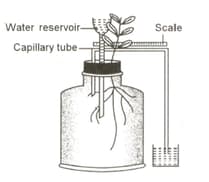Most of the transpiration in tall trees occurs through
Important Questions on Transport in Plants
Study the diagram and the list given below.
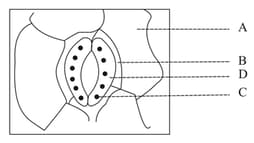
i) Chloroplast
ii) Epidermal cell
iii) Guard cell
iv) Subsidiary cell
v) Stomatal pore
The correct match is
Given below is a diagram of the stomatal apparatus. Match the labels with the corresponding names of the compounds.
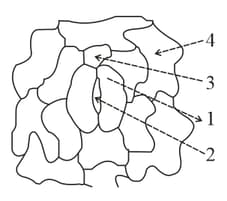
Choose the correct combination.
Identify the correct match of the type of water given in column-I and its character in column-II and select the correct option.
| Column-I | Column-II | ||
| (i) | Capillary water | (a) | present in the form of hydrated oxides of silicon and aluminium. |
| (ii) | Hygroscopic water | (b) | goes down through large pores between soil particles and reaches the water table. |
| (iii) | Combined water | (c) | held in between small non-colloidal soil particles. |
| (iv) | Gravitational water | (d) | held tightly around soil particles by adhesive forces. |
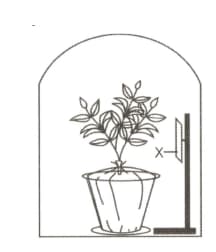
The diagram represents a certain physiological process in plants.
Why is the pot covered with a polythene bag?
The diagram represents a certain physiological process in plants.
Name the process.
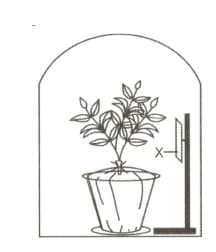
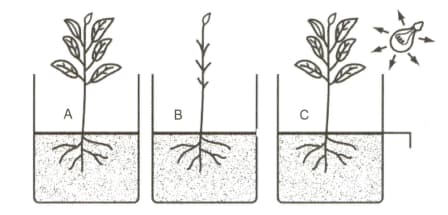
Three plants A, B and C are placed in a beaker containing coloured water. The water in each beaker is covered with a layer of oil. The leaves were removed from plant B while plant C was exposed to strong light.
(a) In which plant, A. B or C, would the water move up fastest?
(b) In which plant would water move slowly?
(c) Why is the water covered with oil?
(d) What is being investigated by this experiment?
State the use of capillary tube in the given apparatus.
